Messerschmitt
Me 209 V1 & V4
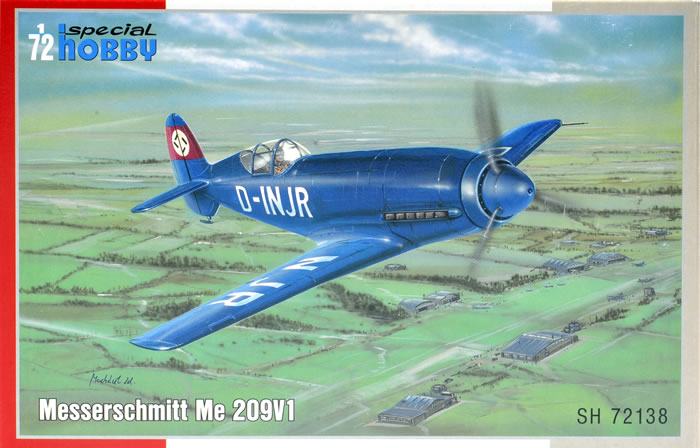
Special Hobby, 1/72 scale
S u m m a r y : |
Catalogue Number: |
Special Hobby
Kit No. SH72138 - Messerschmitt Me 209 V1, and
Kit No. SH72221 - Messerschmitt Me 209 V4
|
Scale: |
1/72 |
Contents & Media |
Details below. |
Price: |
£13.50 EU Price (£11.25 Export Price) plus shipping available online from Hannants |
Review Type: |
First Look. |
Advantages: |
An interesting aircraft; neatly moulded; good decals; clear instructions. |
Disadvantages: |
The one-piece canopy does not allow the good cockpit detail to be seen; no seat beltss; no locating pins on main parts. |
Conclusions: |
Recommended to modellers with an interest in speed record setters or in the history of German aircraft. Yet another example of Special Hobby’s great production of kits catering for all interest areas in our hobby. |
Reviewed by
Graham Carter

HyperScale is proudly sponsored by
Squadron.com
Designed at a time when nations were obsessed with convincing the rest of the world that they could build the biggest/highest flying/ fastest aeroplanes, the Me209 V1 was a diabolical-handling racer that firstly took the world speed record from Heinkel’s He100 and then, slightly modified, set a speed record in April 1939 (eclipsing that set by the magical Macchi MC72) that stood until 1969! As an aside the record set by the MC72 for floatplanes still stands!
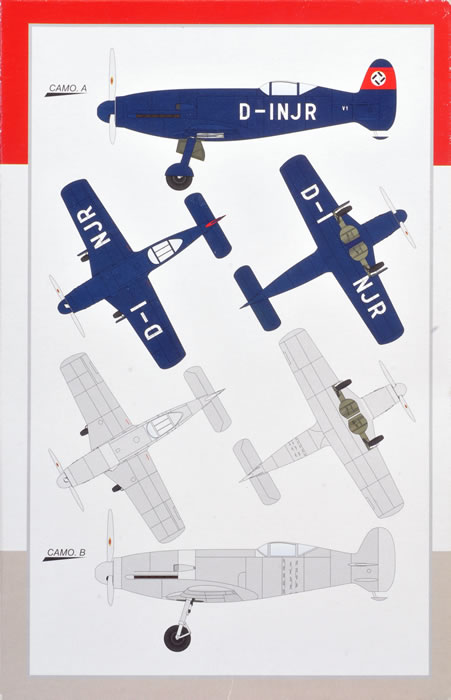
Despite the obvious shortcomings (visibility from the cockpit, small size, lack of tail-wheel, and very light construction) it was modified into the V4 for military trials. Modifications included replacing the surface cooling system with underwing radiators and extending the wingspan by close to 2 metres (6 ft). Armament was installed, two machine-guns in the upper nose and a cannon firing through the propellor hub - the classic Messerschmitt set-up.
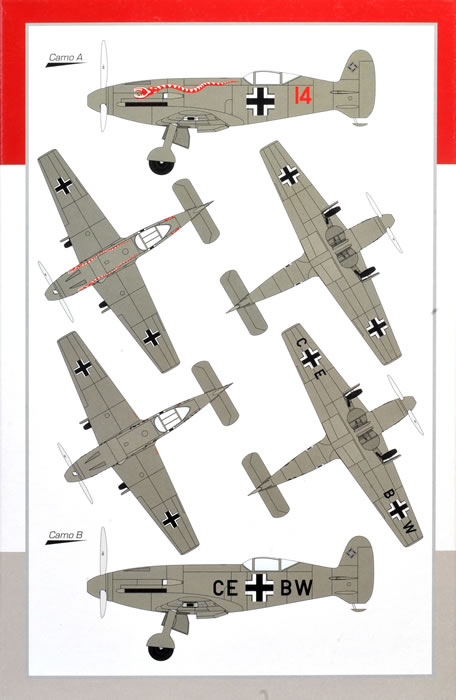
At this stage the Bf 109 was already established in Luftwaffe service and the 209 offered no advantages so no further development took place.
(from Wikipedia and the kit instructions)
These two kits represent the V1 racer and the military trials V4 variants and share a sprue of minor parts as well as the canopy, with the different major components, wings and fuselages, on a seperate sprue. Quite a few parts are repeated in each kit so your spares box will benefit to the tune of 14 from the V1 and 9 from the V4 kits. They will replace the previously available Huma kit which reports indicate was bit of a ‘woof woof’ to build.
Presented in SH’s familiar smaller end-opening boxes, each has an appealing colour image on the top and colour schemes of each variant on the rear/bottom. Instructions are in colour in an 8-page A5 booklet, with history section identical on each front page and the documentation for the later version of the V1 and for the V4 are missing. Parts maps show which of the contents are to left out of the different variants. Each stage has colour callouts from the Gunze range of paints.
Parts are cleanly moulded in the familiar mid-grey with no sign of flash on any parts. Panel lines are subtle and controls surfaces have more deeply delineated outlines. There are quite a few moulding pips and pits but none intrude into visible areas. The usual short-run issue of no locating pins will mean a little more care in lining up components to be glued. Some attempt has been made to mould details into the wheel wells and doors. The propellor has to be built up from a number of parts. The canopy is clearly moulded and not a vacform part.
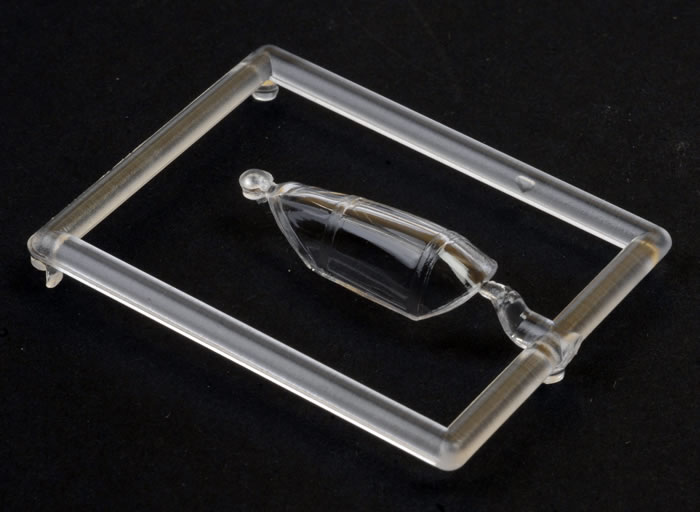
Interior is represented by nice raised structural components and a number of seperate parts for the sundry boxes, wheels and engine controls. Instrument panel is a decal. The seat has no belts so these will have to be sourced outside. Certainly the cockpit is more than acceptably detailed for this scale and its a pity that the canopy is moulded in the closed position.
Colours & Markings
Decals are neatly printed in-house and represent two schemes for each variant.
Details are as follows:
V1

- the dark blue D-INTR world record setter with the taller fin/rudder - 755 kph on 26/4/1939, and
- the original aluminium Wr.N 1185 with short vertical tail and no undercarriage doors.
V4
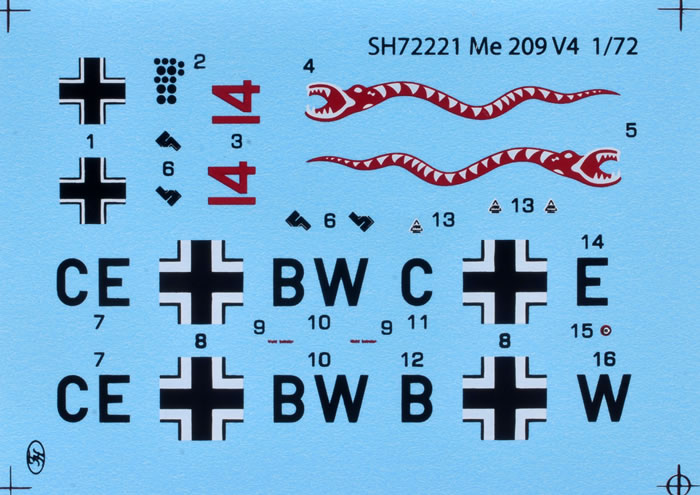
- W.Nr. 1188 in overall RLM02 and full German crosses with a red 14 and a red and white snake on the forward fuselage , and
- W.Nr. 1188 later during military trials, again in overall RLM02 and carrying the codes CE+BW on the fuselage.
Recommended to modellers with an interest in speed record setters or in the history of German aircraft.
Yet another example of Special Hobby’s great production of kits catering for all interest areas in our hobby!
Thanks to Special Hobby for the review sample.
Review Text & Images Copyright © 2018 by Graham Carter
Page Created 15 January, 2019
Last updated
17 January, 2019
Back to HyperScale Main Page

|
